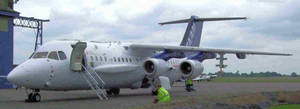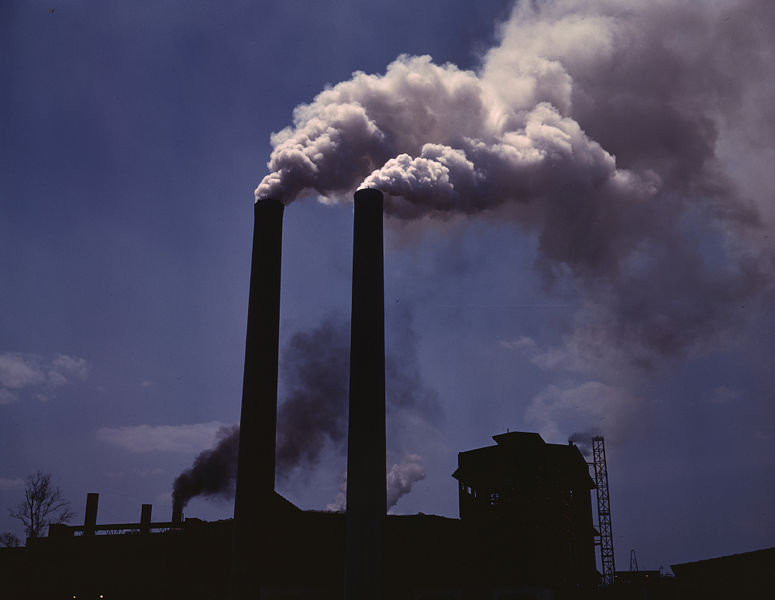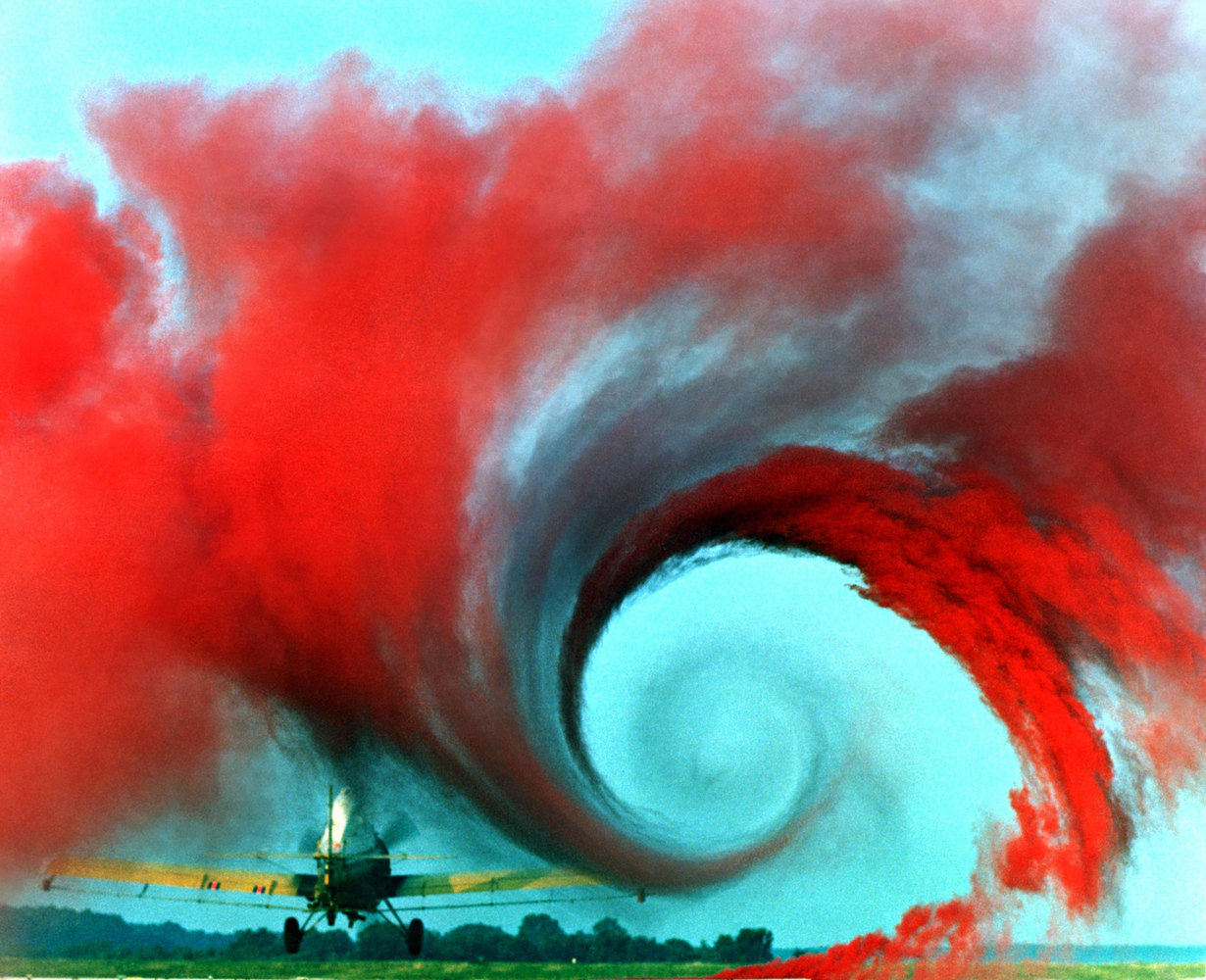Sampling the Atmosphere and Tracking Pollution - the RONOCO Campaign
Interview with
Ben - How do we study the atmosphere? We have a vast array of tools and chemical tricks that we can rely on, but the atmosphere is a very dynamic thing. So sampling the air in just one place can only tell us so much. Now, an international consortium of scientists and organisations including the MET office, the Natural Environment Research Council, have taken to the skies in a modified BAe-146 airliner to explore what happens to atmospheric chemistry once the Sun goes down...
Rod - Mission to Mission 2.Mission2 - Go ahead.
Rod - Just to say that we're just about to enter the top of the cloud layer, so instruments need to perhaps just be aware of that.
Mission2 - Okay, copy that.
Rod - Mission to instrument scientists, we're descending hopefully into the pollutant layer...
 Ben - The RONOCO campaign, that's short for ROle of Nighttime chemistry in controlling the Oxidising Capacity of the AtmOsphere, allows scientists from all over Europe to study the atmosphere in a unique way. Atmospheric chemistry changes when the Sun, a driver of many chemical reactions, goes down. So, by setting off on a modified airplane at dusk and following the plumes of pollution into the night, the scientists on board can get a far better understanding of the pervasiveness and importance of night time chemical processes. To know when and where to track this pollution, the researchers rely on weather reports from the MET office as part of their daily teleconference. Here's Dave Kindred...
Ben - The RONOCO campaign, that's short for ROle of Nighttime chemistry in controlling the Oxidising Capacity of the AtmOsphere, allows scientists from all over Europe to study the atmosphere in a unique way. Atmospheric chemistry changes when the Sun, a driver of many chemical reactions, goes down. So, by setting off on a modified airplane at dusk and following the plumes of pollution into the night, the scientists on board can get a far better understanding of the pervasiveness and importance of night time chemical processes. To know when and where to track this pollution, the researchers rely on weather reports from the MET office as part of their daily teleconference. Here's Dave Kindred...
Dave - I think it's going to be looking and chasing the clearer patches after today. I think today is going to be the best flying day we've got in the next several, and I think plans to fly along the English Channel. I think that's still the best area for today and around the Southwest approaches may be the Bristol Channel...
Ben - Armed with this knowledge, Cambridge University's Professor Rod Jones, a Mission Scientist on the RONOCO campaign can start to make decisions about the course that they will take.
Rod - What I'm going to be doing is sitting next to the pilots in the cockpit. I'll have a certain amount of information from the crew and the scientists at the back, telling me what the atmosphere looks like, and we'll be making judgements about where to go, on the basis of what we actually see because we're using forecasts to give us a good idea to where we should be broadly, and we're going to use the measurements we make on the airplane to try and refine that and put it exactly in the right spot.
Ben - That was Rod Jones. Karen Hornsby from the University of Leicester is one of the scientists on board.
Karen - Because we're looking at the boundary layer which is quite close to the surface, we have to go as close to the surface as we possibly can. So, during the day over the sea, we can get down as low as 50 feet which is quite exciting when you're stood up strapped to your rack for safety, looking out the window and seeing the waves whipping by. But obviously at night, it's more dangerous to go that low, so we've been flying more like 1500 feet over the ocean and it's still fairly exciting.
Ben - The plane itself is packed with scientific instruments, each measuring, sampling or monitoring a different aspect of the atmosphere. Ruth Purvis, from the University of York introduces us to the core chemistry instruments.
 Ruth - This is a set of instruments that is on the aircraft, every time it flies, so it tends to be part of what we call a core instrument fit and we have an ozone analyser, a carbon monoxide analyser, and NOx analyser - that's nitrogen dioxide. The most important two on this rack really are the ozone and the carbon monoxide monitor. These are both key atmospheric tracers. We have carbon monoxide which is what we call an anthropogenic tracer and that just means that it's a man-made pollutant really. You will see high amounts of carbon monoxide in all kinds of plumes that we're tracing. The ozone tends to be in really strong polluted plumes, so we can use both these measurements to see when we're in the plume and they're really good markers for that.
Ruth - This is a set of instruments that is on the aircraft, every time it flies, so it tends to be part of what we call a core instrument fit and we have an ozone analyser, a carbon monoxide analyser, and NOx analyser - that's nitrogen dioxide. The most important two on this rack really are the ozone and the carbon monoxide monitor. These are both key atmospheric tracers. We have carbon monoxide which is what we call an anthropogenic tracer and that just means that it's a man-made pollutant really. You will see high amounts of carbon monoxide in all kinds of plumes that we're tracing. The ozone tends to be in really strong polluted plumes, so we can use both these measurements to see when we're in the plume and they're really good markers for that.
Ben - Sarah Moller, also from the University of York runs the N.O.x or NOx rack.
Sarah - Nitrogen oxides are generally produced wherever the temperature is high enough for nitrogen and oxygen in the air to join together to form nitrogen oxide, so that's combustion, anything like that. So when you see pollutant plumes, they often include NOx, and that's what we measure with this instrument. So what it does is it sucks air in from the outside and it makes NO2 in the excited state which then gives off light, and we measure how much light it gives off, and that tells us how much NO or NO2 we've got in the air. During the day, you have NO and NO2, but at night, you don't get NO formed because it's formed by sunlight changing NO2 into NO. So at night, you would expect to see all NO2. So when we do dusk or dawn flights, you see at dusk, the NO starts to disappear as the sunlight goes, and all the processes convert the NO that's there into NO2, and then at dawn, you see as the sun comes up, you start to get the NO2 photolysed and you start to get NO being produced.
Ben - Other compounds of nitrogen are also important as Jennifer Muller from Manchester University explains...
Jennifer - The CIMS stands for Chemical Ionisation Mass Spectrometer, so we're using a compound called methyl iodide, and produce iodine ions, so that's I-, to then have them in a chamber, reacting with the air samples from the outside. The I- locks onto particular compounds that we're interested in. So one compound for example, that's also important for this campaign is nitric acid. So nitric acid is HNO3 and basically, the I- hangs on to the HNO3 and we can see it in our mass spectrum at a particular mass. So, the HNO3, the nitric acid, is one of the nitrogen compounds that we're interested in, the focus being on nitrogen compounds during the night and how they react.
Ben - In addition to nitrogen, the RONOCO campaign looks at a range of other important chemicals. Hannah Bunyan is from the University of Leeds.
Hannah - FAGE stands for Fluorescence Assay by Gas Expansion and it's a low pressure technique that samples air from the outside from the aircraft, so the ambient air. We draw it into a detection cell and then we excite the molecules that we're interested in using a laser. We're want to measure the concentrations of the OH and HO2 radicals, so we tune our laser wavelength so that we can excite the OH radical and then we measure the fluorescence that is produced when the radical relaxes, and that gives us a measure of concentration. And the OH and HO2 together, collectively they're called called HOx. During the day, OH is a really important oxidiser of hydrocarbons and things like that, and it's made by photolysis of ozone, but during the night, there's more ambiguity about what its role is and how it works. It's possible that it's produced by the reactions of ozone with alkenes, but it's also possible that the nitrate radical which is being measured during these flights is also important. So basically, we're trying to give some contribution to how much the OH radical contributes to oxidation at night. So far, it's going pretty well.
Karen - My name is Karen Hornsby and I'm a Research Associate at the University of Leicester, working on the Peroxy Radical Chemical Amplifier or short named, PERCA. My rack basically consists of two half-height metal 19-inch racks, and within it, we store several gas cylinders containing compressed air, nitrogen and nitrogen oxide. We sample gas through the skin of the aircraft using two glass inlets which then go to two detectors which tell me how much nitrogen dioxide I'm generating from the Peroxy Radicals that I'm converting into nitrogen dioxide.
Ben - Gavin McMeeking from the University of Manchester is not measuring gases in the atmosphere, but particles.
 Gavin - This is the aerosol mass spectrometer. It measures small particles that are hanging around in the atmosphere. It's a little different from most of everything else on the aircraft in that it doesn't look at gas phase species, it's looking at these particles. The aerosols have a lot of impacts on the atmosphere and air quality and particularly for the things RONOCO is interested in. For one thing they're an important place where nitrogen ends up, a lot of it can basically turn into nitric acid and eventually go into the particle phase and form things like ammonium nitrate, and this instrument can measure that. The other thing is that the aerosols themselves can be surface sites for a lot of different chemical reactions that happen in the atmosphere. So, that's one of the things that we're interested in trying to characterise - how many particles are around at different parts of the flight, where we are in different altitudes, that kind of thing, and then also how does that change with time, and are we seeing increases in the amount of say, nitrogen that's in the particles as the evening progresses, or as it gets colder, as it gets more humid, other factors like that.
Gavin - This is the aerosol mass spectrometer. It measures small particles that are hanging around in the atmosphere. It's a little different from most of everything else on the aircraft in that it doesn't look at gas phase species, it's looking at these particles. The aerosols have a lot of impacts on the atmosphere and air quality and particularly for the things RONOCO is interested in. For one thing they're an important place where nitrogen ends up, a lot of it can basically turn into nitric acid and eventually go into the particle phase and form things like ammonium nitrate, and this instrument can measure that. The other thing is that the aerosols themselves can be surface sites for a lot of different chemical reactions that happen in the atmosphere. So, that's one of the things that we're interested in trying to characterise - how many particles are around at different parts of the flight, where we are in different altitudes, that kind of thing, and then also how does that change with time, and are we seeing increases in the amount of say, nitrogen that's in the particles as the evening progresses, or as it gets colder, as it gets more humid, other factors like that.
Ben - The RONOCO campaign took to the air for the last of their winter flights a few weeks ago and it will take time to understand all the data they've collected. Before their final flight, Michelle Cain explained what they've been able to see so far.
Michelle - We've got a mixture of different weather conditions. To start with, we had fronts coming through and quite strong flow as a consequence. So we saw some really good plumes from Birmingham, Manchester and Edinburgh, so we were able to track those plumes as they came off the coast. Now we've got a bit more - well, a very high pressure system just stagnating over us. It's not a strong flow. It's quite slack winds and we've managed to get one flight the other day over the English Channel. It was quite messy, we saw lots of pollution coming off the UK as a whole, but embedded in that, the London plume. That was a dusk flight so we saw the transition from daytime to night time, so all the photo chemistry just switches off then you see different things starting to appear after dark. So that was very interesting and we're going to try and repeat that today. So it's all in all been pretty successful and we've been quite lucky with the weather, I would have to say!
Pilot - Start of descent. Three - two - one.
Ben - What a fantastic mission that sounds like. We will look forward to finding out what they've discovered some time in the future. Many, many thanks go to Rod Jones at Cambridge University and to Doug Anderson at Cranfield University for their essential help with making that happen.










Comments
Add a comment